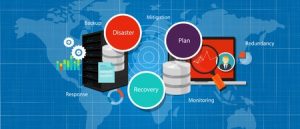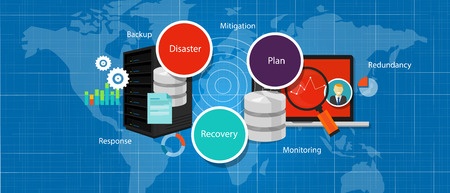Information About Backup and Disaster Recovery
[responsive] [/responsive]
[/responsive]
Information About Backup and Disaster Recovery will be Discussed in a Series of Six Blogs
Backup and disaster recovery are CRUCIAL to your business.
Should your computer crash, your office floods, someone breaks in, or any other catastrophe occurs, you must have a Backup and Disaster Recovery (BDR) plan in place…otherwise you just might find yourself out of business.
There is a plethora of BDR products and services with different capabilities. Many times it is hard to determine what you need – or even if a product or service fits your specific needs.
We are here to take the confusion out of what you need to know!
Some of the Main BDR Products on the Market Today
• Intronis
• SOS
• Crashplan
• Carbonite
• Barracuda
• Datto
• Axcient
• Veeam
• Continuum
• Dropbox
• New Cloud
• Diligex
• Cloudera
• Local attached/removable drives
The majority of these fall into the following categories:
1. Cloud backup – backs up data only
2. Cloud backup that backs up data AND system data
3. Local backup of data only
4. Local backup of data and system data
5. Local and cloud backup of data only
6. Local and cloud backup of data and system data
Here is what YOU NEED TO KNOW about these categories!
CLOUD BACK UP — BACKS UP DATA ONLY
Cloud backup services via the Internet are excellent and low overhead solutions that are typically very well priced.
Pricing is usually based upon the amount of data that you need to backup.
One big consideration is your Internet bandwidth.
If, for example, you are backing up 2TB over a 20Mbs Internet line, it will take you about 224 hours to successfully backup your data. This is approximately 9 days!
To compensate for this, the vendor will provide a “compression factor”. If the vendor provides 50% compression, the amount of time to backup you data would drop down to 112 hours — or about 41/2 days. A bigger compression factor will result in a faster backup (and restore).
In this case, the usual plan is to do one FULL backup and after that perform incremental backups.
This means that the backup process only backs up data that has changed. This is a very important point.
After the first full large backup is performed, the incremental backups are usually much smaller and take much less time.
The next consideration is restoring your data. If you restore your data from the cloud, you will be governed by the same issues – Internet bandwidth and the compression factor.
It is the same math, but instead of sending data out you are accepting incoming data.
The danger lies in how often you perform your incremental backups. If you backup only every two days, and if your office suffers a disaster, then when you restore, your data may be up to two days old. Some businesses perform incremental backups two or four times every day.
Lastly, this method only backs up data – it DOES NOT backup system data. This means that before you restore your data, you must first rebuild your entire computer. This means you must install all of the programs…and THEN restore your data.
In our next blog, we will be discussing category #2: Cloud Backup that Backs Up Data AND System Data.
Brought to you by:
George M. Baldonado
President & CEO, Oasis Technology, Inc.
